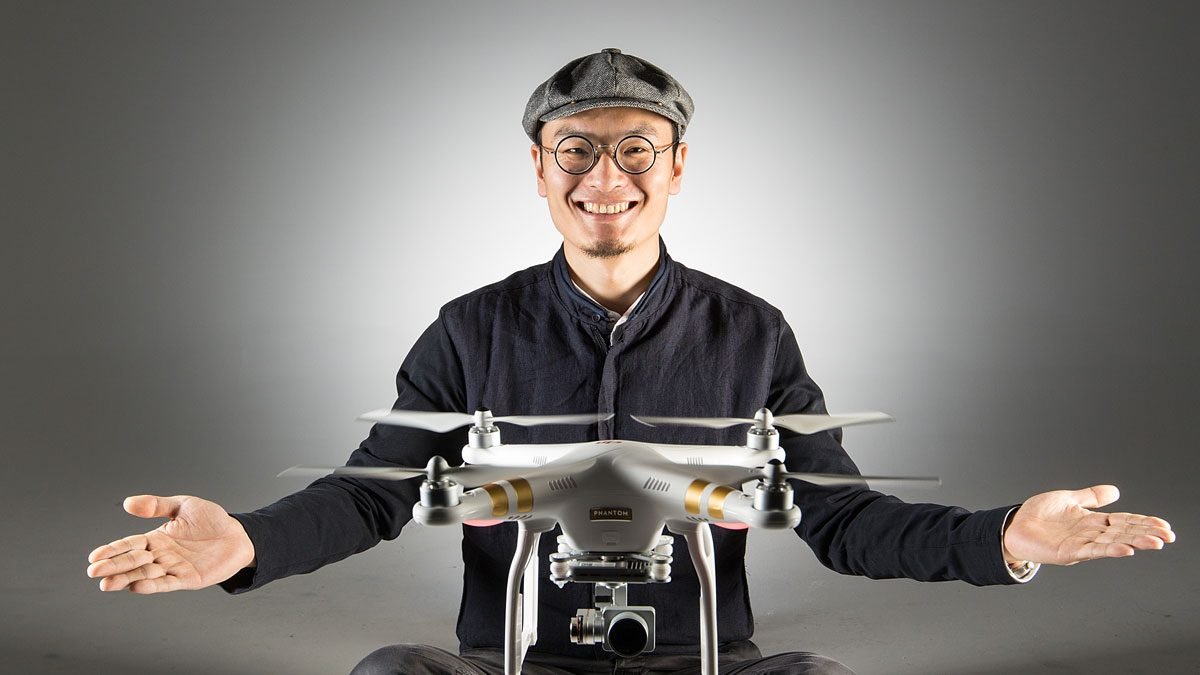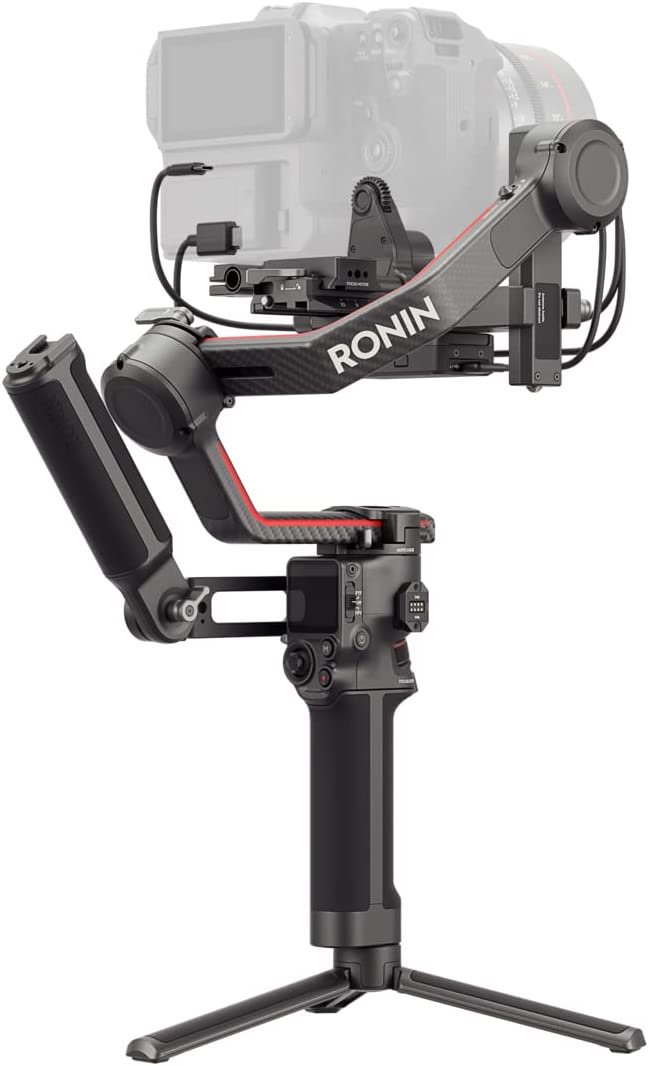DJI - Understanding the Product Line
Founded in 2006 by Frank Wang, Da-Jiang Innovations (DJI) has grown to be a dominant player in the drone and gimbal industry. With its headquarters in Shenzhen, often called China's Silicon Valley, DJI has been pushing the boundaries of technology and innovation. Over the years, DJI has expanded its product line from simple flight controllers to sophisticated drones and gimbals, establishing itself as a leading brand in aerial photography and videography.
Importance of DJI in the Drone and Gimbal Industry
DJI has played a pivotal role in making aerial photography accessible to a broader audience. Its advanced yet user-friendly products have transformed the way photographers and filmmakers capture images and videos. DJI's influence goes beyond just hardware; their software solutions and applications have been instrumental in delivering seamless and integrated experiences to users. Their contribution has undeniably shaped the current landscape of the drone and gimbal industry.
Let’s take a look at DJI's product line, focusing on their drones and gimbals. We will delve into the specifics of various models, exploring their unique features, benefits, and potential drawbacks.
DJI Drones
Overview of DJI's Drone Product Line
From compact, travel-friendly drones to professional-grade quadcopters, DJI's product line offers something for every type of aerial photographer. DJI's drones are renowned for their stability, precision, and versatility, proving instrumental in revolutionizing aerial photography and videography.
Breakdown of Specific Models
In DJI's extensive range, the Mavic series stands out for its portability and advanced features. Mavic drones like the Mavic Air 2, Mavic 2 Pro, and Mavic Mini offer a great balance of power, portability, and professional-quality imaging capabilities. On the other hand, the Phantom series, with models like the Phantom 4 Pro V2.0, have set the industry standard for their easy controls, advanced obstacle avoidance systems, and superior camera quality.
Advantages and Unique Features of DJI Drones
DJI drones bring several unique features to the table. Their proprietary OcuSync transmission technology delivers a stable video feed even at long ranges. DJI drones are also known for their intelligent flight modes like ActiveTrack, QuickShots, and Hyperlapse, which offer creative flexibility to photographers. The cameras on DJI drones, equipped with Hasselblad lenses on certain models, capture sharp, detailed images and smooth, color-rich video.
Possible Limitations or Disadvantages
While DJI drones boast numerous features, there are a few considerations to keep in mind. The higher-end models come with a steep price tag, which might be a deterrent for hobbyists or beginners. Learning to fly a drone safely and efficiently also has a steep learning curve. Additionally, users must abide by local laws and regulations regarding drone use, which often limit where drones can be flown.
DJI Gimbals
Introduction to DJI's Gimbals with Built-in Cameras
DJI isn't just leading the drone industry; they have also made a significant impact on stabilizing technologies with their range of gimbals. These gimbals, many equipped with built-in cameras, have become indispensable tools for photographers and videographers seeking to capture fluid and stable footage on the move.
Key Models
DJI's gimbals can be divided into two main lines: the Ronin series, aimed more at professional filmmakers, and the Osmo series, which targets content creators of all levels. The Ronin series, including the Ronin 2 and Ronin-S, are known for their smooth stabilization, robust build, and versatility in handling different camera setups. Meanwhile, the Osmo series, like the Osmo Pocket and Osmo Mobile, stand out for their portability and user-friendly operation, making them perfect for on-the-go videography and vlogging.
Advantages and Innovative Features of these Gimbals
DJI gimbals are lauded for their stabilization capabilities, ensuring jitter-free and professional-grade footage. Advanced features such as ActiveTrack, Force Mobile, and 3D Roll 360 open up new possibilities for dynamic and creative shooting. The built-in cameras on some models, like the Osmo Pocket, deliver crisp images and video, enhanced by features such as HDR and slow motion.
Potential Drawbacks to Consider
While DJI gimbals offer numerous advantages, there are potential drawbacks to consider. The professional-grade Ronin series can be quite hefty, not just in terms of price but also in weight and size, which may not suit solo or on-the-go shooters. The Osmo series, while compact and convenient, may not offer the level of control and customization that professional videographers require. Lastly, like all technology, gimbals require some learning and practice to master.
DJI Camera Technology
Overview of DJI's Camera Technology
In addition to their innovative flight and stabilization systems, DJI has also gained a reputation for its excellent camera technology. DJI's cameras, found in both their drones and gimbals, are designed to capture high-quality images and video even in challenging conditions, making them a trusted choice for many photographers and videographers.
Key Features and Benefits
One of the standout features of DJI's camera technology is their collaboration with Hasselblad, the iconic Swedish camera manufacturer. This partnership has resulted in advanced cameras like the one in the Mavic 2 Pro, boasting a Hasselblad L1D-20c camera with a 20MP 1-inch CMOS sensor. This allows for exceptional image detail and improved light and color performance.
DJI's camera technology also incorporates sophisticated obstacle sensors and tracking capabilities. These features, coupled with machine learning and computer vision technologies, enable safer flights and automated, precision tracking of subjects.
Possible Considerations for Photographers
While DJI's camera technology offers numerous advantages, there are potential considerations for photographers. The smaller sensors in some of DJI's cameras might not match the performance of a full-frame DSLR or mirrorless camera, especially in low-light conditions. Furthermore, the fixed lenses on most DJI drones and gimbals might limit the creative flexibility of some photographers. It's important to evaluate these factors based on your specific photography needs and expectations.
DJI Software
Understanding DJI's Software Ecosystem
The DJI software ecosystem is a comprehensive suite designed to enhance and streamline the use of DJI drones and gimbals. This includes apps like DJI GO 4 and DJI Fly, which offer a range of features, from drone flight controls and live video feeds to editing and sharing capabilities.
Features and Benefits of DJI's Software Integration
The seamless software integration provided by DJI is a major selling point. Apps like DJI Fly and DJI GO 4 offer intuitive controls and real-time information about your drone or gimbal. These apps also provide automatic editing templates and filters, making it easy to create professional-looking footage without needing advanced editing skills.
Additionally, DJI's software provides advanced features like ActiveTrack for tracking subjects, Hyperlapse for creating time-lapse videos, and various flight modes that can help photographers capture unique perspectives.
Potential Challenges and Limitations
While DJI's software provides many benefits, it's not without potential challenges. Some users have reported connectivity and compatibility issues with certain devices, which can affect the usability of the apps. Additionally, the sheer number of features and settings available might be overwhelming for beginners. Therefore, it's worth spending time getting familiar with the software to take full advantage of its capabilities.
Selecting DJI Gear for Your Photography Needs
Assessing Your Needs as a Drone or Gimbal Photographer
Choosing the right DJI gear requires a clear understanding of your needs and objectives as a drone or gimbal photographer. Are you a hobbyist seeking to capture stunning landscapes from above? Or are you a professional filmmaker requiring advanced features for intricate shots? Identifying your needs will help narrow down your options and enable you to choose the most suitable DJI gear.
DJI's broad product range caters to a variety of photography styles and environments. For instance, the Mavic series, with its portability and high-quality camera, is ideal for travel and landscape photographers. Meanwhile, the Phantom series provides higher image quality and more advanced features suitable for professional filmmakers. If you're into street photography or vlogging, the DJI Osmo series offers compact and lightweight gimbals that deliver smooth footage.
Considering the Cost and Value of DJI Products
While DJI products often come at a premium, the price tag reflects their quality and capabilities. DJI drones and gimbals offer robust build quality, sophisticated technology, and advanced features that can greatly enhance your photography or videography. It's also worth noting that DJI provides reliable customer service and extensive resources for learning, adding further value to their products. Nonetheless, always consider your budget and the value you expect to get from the equipment before making a purchase.
Conclusion
Undoubtedly, DJI has a significant role in shaping modern photography. Their drones have opened up an entirely new perspective, enabling aerial photography to flourish. Meanwhile, DJI's gimbals have revolutionized video stabilization, providing filmmakers and vloggers with the tools to capture smooth, professional footage. Their commitment to innovation continues to push boundaries and elevate the standards of imaging technology.
The world of DJI is vast, filled with potential and opportunity for every type of photographer. Don't be afraid to explore, experiment, and push your creative boundaries with DJI's products. Whether you're launching a drone into the sky for the first time or steadying your shot with a handheld gimbal, the possibilities for breathtaking imagery are endless. Let your creativity fly, and embrace the future of photography with DJI.
You might also be interested in:








